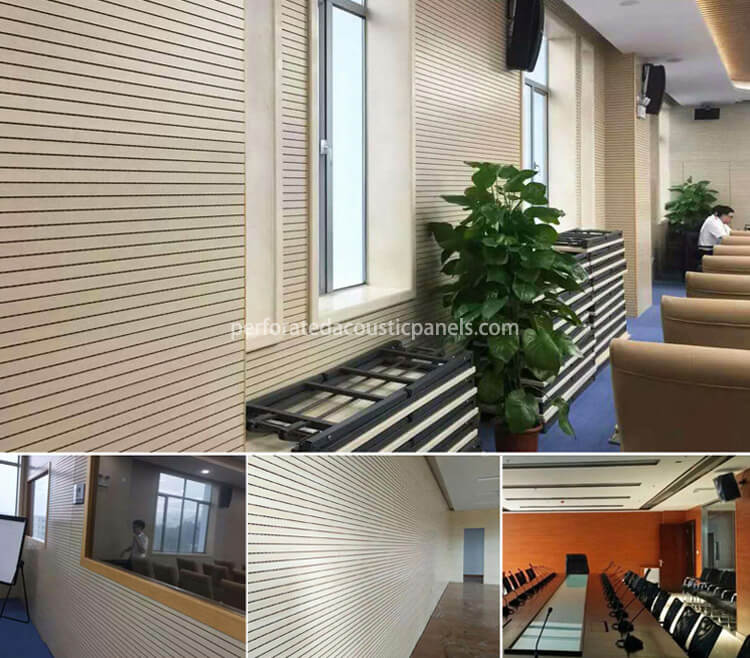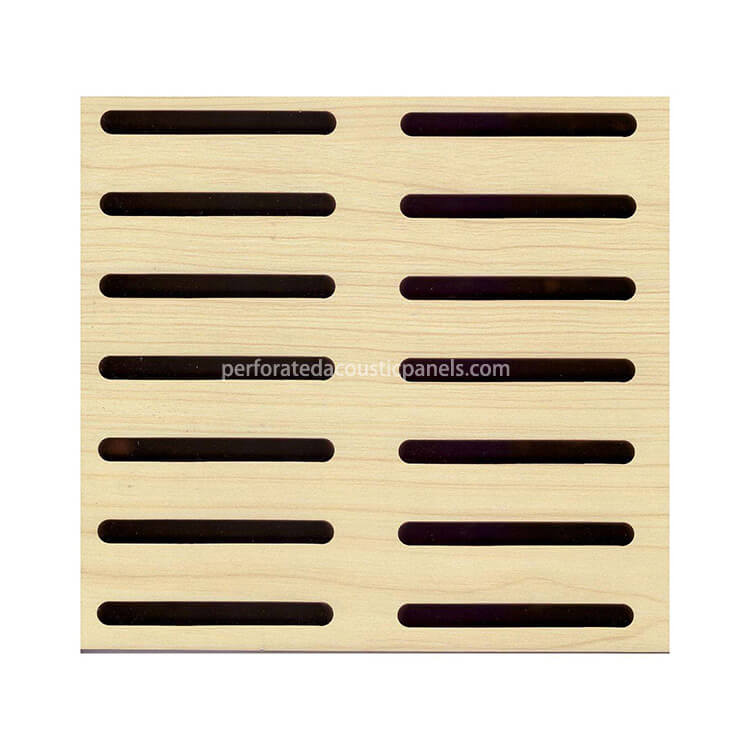I. Introduction
Timber acoustic panels play an essential role in sound management, providing both functional and aesthetic advantages in various spaces. These timber wall panels are specifically designed to improve sound quality by reducing echos, minimising noise transmission, and overall improving overall acoustics; in addition, their visual aesthetic appeal enhances room ambiance as well.
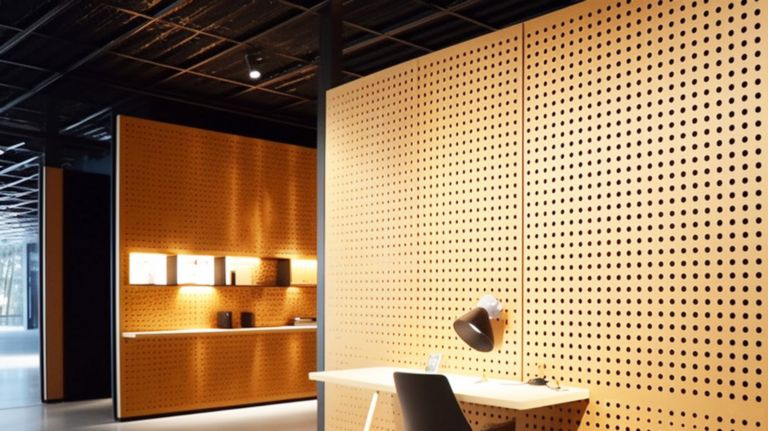
II. Analyzing Timber Acoustic Panels
Timber acoustic panels (also referred to as timber sound panels or timber noise walls) are engineered products designed to control sound reflections and absorb unwanted noise, often used in environments where sound quality is paramount, such as recording studios, auditoriums, conference rooms and home theaters.
Benefits of using timber acoustic panels
Acoustic timber panels for walls offer numerous advantages when it comes to improving a space’s acoustics, including improving speech intelligibility and sound clarity. By effectively absorbing sound waves, they effectively reduce reverberation and echo, helping improve speech intelligibility as well as overall sound clarity – ideal for environments in which clear communication and audio quality is imperative.
Timber wall panel boasts aesthetic advantages that go far beyond its functional use. Available in an assortment of designs, patterns, and finishes for creative installations or simply adding warmth and natural beauty to any room, these panels add beauty to any environment they adorn.
By combining the acoustic properties and aesthetic appeal of timber panel wall, designers and architects are given an excellent opportunity to create visually captivating yet acoustically optimized environments. Selecting appropriate timber board wood species for veneer layers of these panels plays a pivotal role in reaching desired aesthetics.
In the following section, we will delve deeper into how veneer wood species affects the aesthetics of timber wall, examining how different wood varieties can enhance visual appeal while still offering excellent acoustic performance.
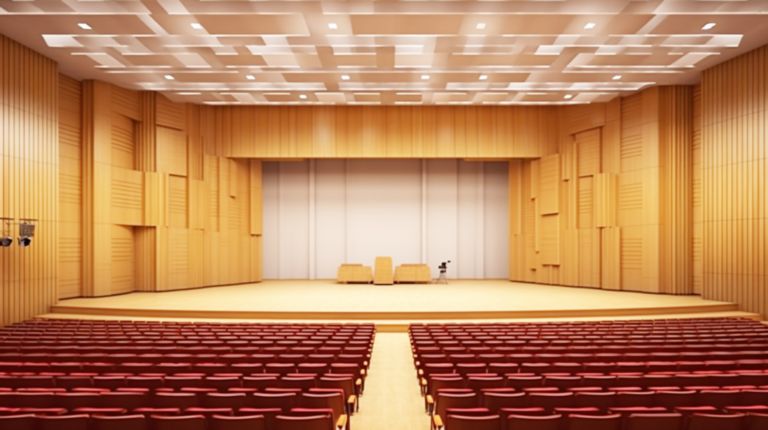
III. Importance of Veneer Wood Species
Selecting the appropriate veneer wood species for acoustic timber wood panel is of utmost importance. This decision will have a profound effect on their aesthetics, which in turn may influence the final appearance and feel of an installation.
Different wood species feature unique qualities that add visual interest and texture to timber acoustic panel made of timber, such as color, grain pattern and texture. Designers can select veneer wood species to craft panels that blend in seamlessly with their surroundings or stand out as focal points in an outdoor space.
Additionally, veneer wood species can help increase durability and longevity of decorative timber wall panels. Certain wood species naturally provide greater resistance against wear, fade and moisture damage; thus making them suitable for installations in high traffic areas or environments with specific humidity conditions.
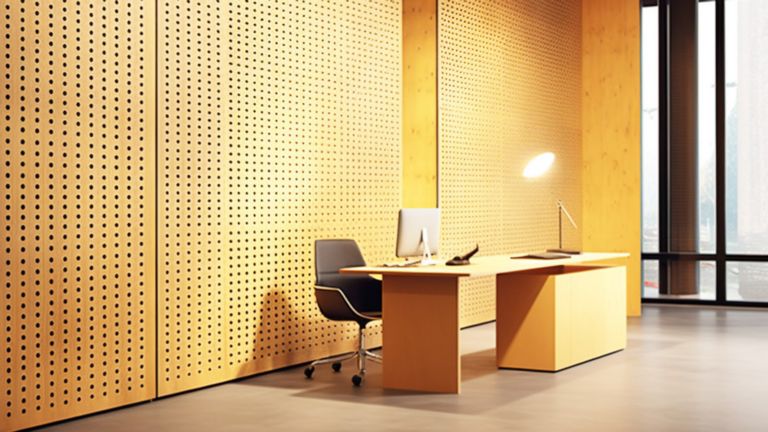
IV. Aesthetics and Timber Acoustic Panels
Decorative timber panels’ aesthetics are greatly affected by their choice of veneer wood species. Each species boasts its own color palette, from light hues like maple and birch to the darker hues found in walnut and mahogany; these variations of hue allow designers to craft panels that complement a particular design scheme whether modern, classic, rustic, or even vintage aesthetics.
Grain patterns of veneer wood species add depth and visual interest to timber veneer panel, adding depth of field. Some species, like oak and ash, showcase prominent grain patterns while other such as maple and beech are more subdued in appearance. Selecting species with distinct grain patterns can create striking visual effects while adding natural beauty to timber veneer wall panels.
Timber sound absorption panels offer nearly infinite design possibilities due to the wide selection of veneer wood species available for veneer sheets, which can then be assembled into various patterns such as herringbone, chevron or geometric designs on panels. By carefully choosing and arranging veneer sheets from each species species used in its creation, these patterns become visually engaging installations that enhance overall space aesthetics.
Next, we will examine key considerations when selecting veneer wood species for acoustic timber panel to ensure a harmonious blend between aesthetics and acoustic performance.
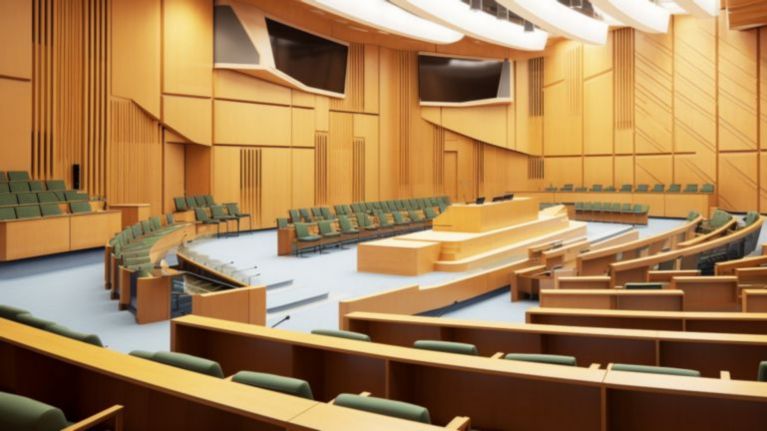
V. Factors to Keep in Mind When Selecting Veneer Wood Species
When selecting veneer wood species for acoustic panels timber, multiple factors must be taken into account to achieve an appropriate balance between aesthetics and functionality. These considerations include color, grain pattern and texture.
Colors
Color plays an integral role in setting the atmosphere and atmosphere of any space, and selecting wood species that complements existing color schemes or desired ambiance is of key importance. Lighter species like maple and birch create an open and airy aesthetic, while darker wood varieties such as walnut and mahogany exude richness and warmth. When choosing wood for your next renovation, be sure to select species which complements both existing color schemes as well as desired ambiance of each room.
Grain Pattern
Grain pattern is also a key factor when it comes to the aesthetics of acoustic timber wall. Oak and ash species feature strong grain patterns that add character and visual interest, while maple and beech have subtler grains with uniform textures for a sleeker and contemporary appearance. Your selection will depend on your design aesthetics.
Texture
Texture plays a critical role in the overall aesthetics of timber acoustics, creating both refined and rustic charm with different wood species such as maple and cherry, oak and pine having more pronounced textures adding rustic charm. When choosing your texture based on both desired tactile experience and overall design concept.
By considering these aspects, ensuring the chosen veneer wood species blends harmoniously into its surrounding environment and creates an aesthetically pleasing installation, ensured by carefully considering them.
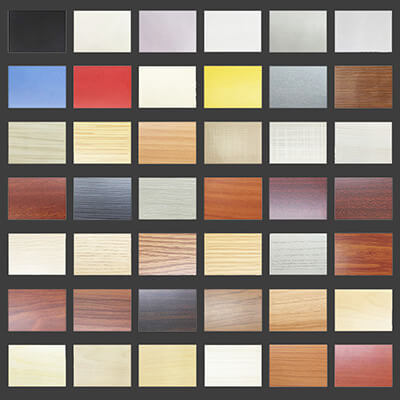
VI. Case Studies and Examples
Real-life examples and case studies offer invaluable insights into the visual impact and design possibilities achieved using various veneer wood species for timber acoustic panels. Let’s examine a few examples:
Walnut Veneer Timber Acoustic Panels
For an elegant conference room setting, walnut veneer timber acoustic panels were used to create an exquisite atmosphere. Their rich dark tones matched well with the luxurious furnishings while their distinctive grain pattern added depth and texture.
Maple Veneer Timber Acoustic Panels
For a modern office space, maple veneer timber acoustic panels were chosen to achieve a clean and contemporary aesthetic. Their light hues helped illuminate the room, while their subtle grain pattern added visual interest without overpowering its overall design.
Mixed Wood Species Pattern
For an interesting music studio design, oak, ash and cherry veneer timber acoustic panels were combined into an eye-catching mixed wood species pattern using their distinct grain patterns and vibrant hues to produce this remarkable masterpiece. This unique design showcased how versatile wood species can be when put to creative use; combined together these acoustic panels created an environment with both aesthetics and sound optimization qualities.
These examples highlight the transformative potential of veneer wood species used in timber acoustic panels, showing how choosing carefully can elevate both visual appeal and overall aesthetics of any space.
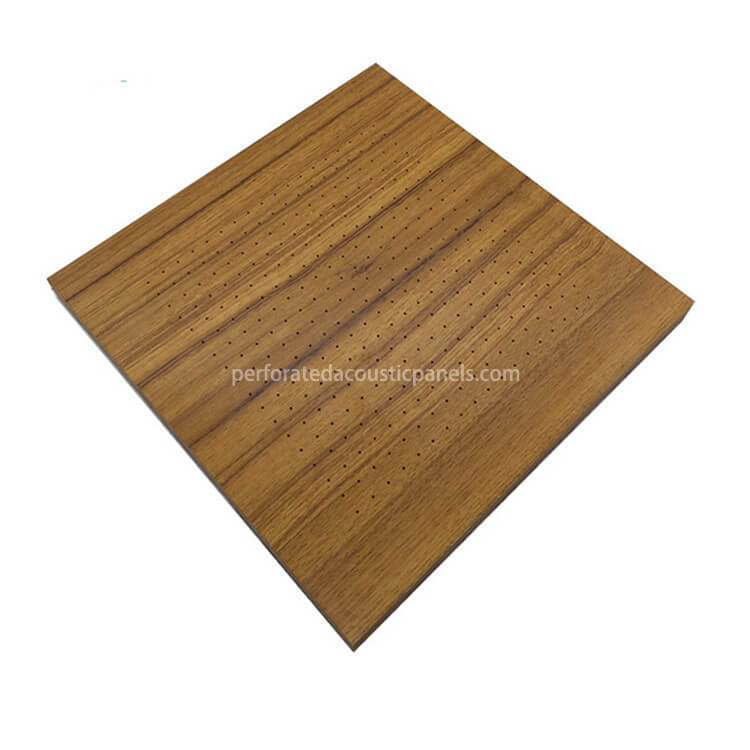
Microperforated Acoustic Panels
Micro Perforated Wooden Acoustic Panels Micro-Perforated Wood Veneer Panels Microperforated Panel
VII. Acoustic Properties and Performance
Acoustic wooden timber panels are chosen not only for their aesthetic value, but also because of their sound absorption properties. These timber wood wall panels absorb sound waves, decreasing echoes and reverberation within an environment. Different species used in veneer layers may have various effects on acoustic performance of panels.
Denser and harder wood species such as oak or mahogany tend to offer better acoustic properties of timber, efficiently dissipating sound energy into dispersion channels for improved room acoustics. On the other hand, species with open grain structures such as ash or pine may provide greater sound diffusion by scattering sound waves in multiple directions and decreasing reflection intensity.
Finding an equilibrium between aesthetics and acoustic performance when selecting acoustic timber battens is of the utmost importance. While aesthetic appeal should play an important role, its implementation should not compromise their ability to effectively manage sound. Therefore, careful thought must be given when selecting wood species which offer both desired aesthetics as well as suitable acoustic properties.
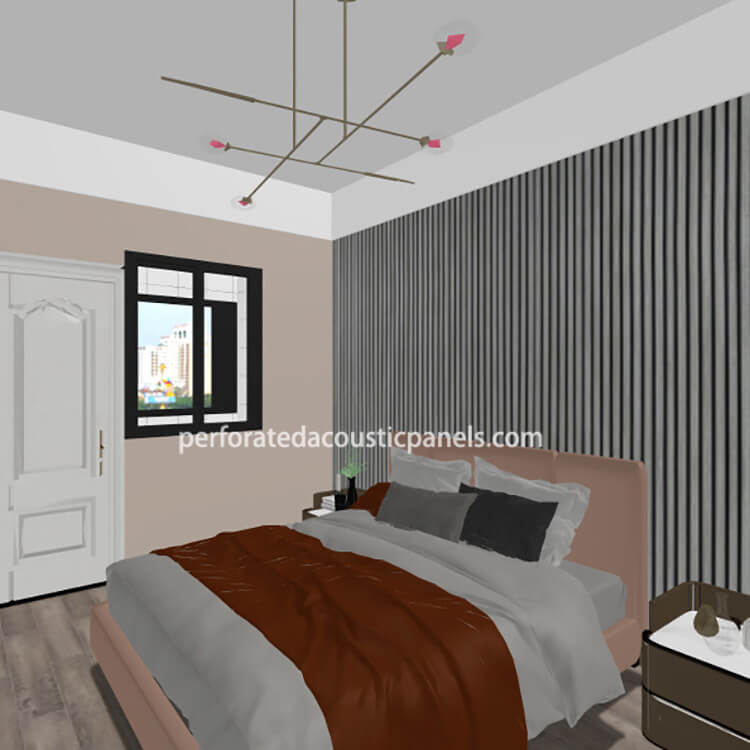
Wood Slat Wall
China Factory Wood Wall Slats Sound Absorption Slat Wood Polyester Acoustic Wall Board
VIII. Conclusion
In summary, choosing veneer wood species has a dramatic effect on the aesthetics of acoustic timber panel system. Different species bring their own individual colors, grain patterns, and textures for endless design possibilities. By carefully selecting appropriate wood varieties, designers can craft stunning installations that enhance overall ambiance while complementing surrounding environments.
Attractive timber acoustic cover must not compromise acoustic performance; their primary goal should be improving sound quality through absorption and diffusion of sound waves. Therefore, when choosing wood species for these timber wall panels, it should meet both aesthetic goals while simultaneously meeting acoustic functionality requirements.
By considering factors like color, grain pattern, texture, and acoustic properties when selecting timber acoustic wall panels that not only look appealing visually but also help manage sound effectively in various spaces, designers can strike a harmonious balance between aesthetics and functionality.
So whether it be acoustic timber walls, perforated MDF panels, decorative timber panels or timber noise wall covers, the impact of veneer wood species should never be undervalued on aesthetics of timber acoustic panels. Choose wisely and allow nature’s beauty of timber to enhance both visual appeal and acoustic performance of your space.

